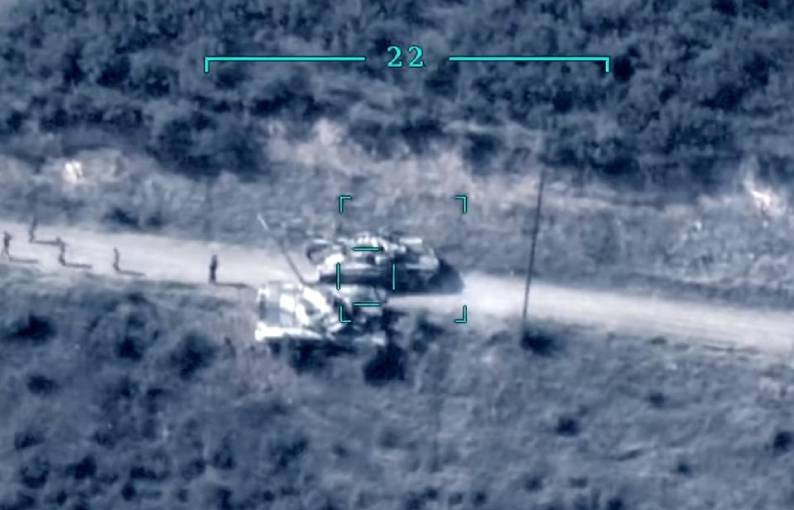Norayr Eblighatian
Ever since the beginning of the 2020 war of Artsakh, I have been preoccupied with deciphering the root causes of the loss of enormous territory in Artsakh. My search for information has led me into 2 groupings or sets of items:
* The war and subsequent results can be grouped as “the perfect storm”.
* The longer-term or chronological view is that the war was a “checkmate”.
Each of these groupings has solemn implications and it is important to perform the right diagnosis.
Complete Lack of information: We have a shortage of reliable information and an abundance of fake news. There might be one or so investigative journalists in Armenia, but the rest are editorial staff, sitting in their TV studios & dispensing cheap/amateurish viewpoints. This lack of validated information has resulted in a complete breakdown of trust between the public and mass media.
At present we have the situation where each partisan group listens and reinforces its perspectives from ‘its own’ media sources. Yes, ‘truth is the first casualty of war’; but the truth was absent even before the start of the war. During the war, some Armenians had to turn to the enemy media to ‘balance’ the claims of their national sources.
The consequences of the Velvet Revolution: The formation of Eastern Armenia is the result of 2 Russian system collapses (The Tsarist in 1918 and Soviet in 1991).
There was no national elite formation after a prolonged national war of liberation. What developed was an empire border administration and a police civil service. Armenians are proud to have given strongmen to the Soviets (and emperors to Byzantium), but those individuals belong to foreign elites. The 1991 independence ushered an oligarchic party dictatorship of previous Soviet local strongmen who changed their attire with nationalistic hues. The Velvet Revolution (a euphemism for weak or timid) was an attempt to get rid of the Armenian oligarchy and its system of government. But, the new establishment could not draw from a deep reserve of administrative talent (as there were few). Furthermore, the new administration was a target of 360 degrees of assault by the oligarchy which tried to come back to power or avoid long jail terms and confiscation of their loot.
The new administration spent more time/energy on defending itself instead of implementing its agenda.
Bottom line: The deep state is shallow in Armenia.
Political Instability: Let’s compare/contrast political instability in Azerbaijan during the first Artsakh war and the turbulent years of Mutalibov-Elchibey. Power continuity and stability in Azerbaijan came after the Aliyevs (father and son) consolidated power since 1993.
By contrast, the oligarchs wasted the legitimacy of the Armenian government, and the velvet revolution was distracted with survival issues.
The political vacuum in both countries (at different times) were influential in the defeats that ensued.
Covid-19 Pandemic: 2020 was a year of extreme upheaval. The pandemic ravaged the health system and the economy of Armenia. A government that was under siege from the oligarchs had to battle the virus also by imposing unpopular lockdowns. The pandemic did its own role in this storm of events.
Strategy: The Armenian strategy was one of defense and the Azeri strategy was one of offense.
The success criteria of these two diverse strategies are different. A defense strategy aspires to blunt the attack of the enemy, while an offense strategy seeks to crush the defense of the enemy.
Furthermore, Armenian defenses were overstretched beyond Artsakh proper territories. This was rationalized as a potential bargaining chip in a land-for-peace negotiation process; which did not happen because of a miscalculation by the Armenian side (have your cake and eat it too). That miscalculation was based on the premise that the balance of power was going to remain in equilibrium.
A folk maxim says that in a non-equilibrium setting war, the defender has to defend his territory a hundred times while an aggressor has to win once. It is for this rationale that the Azeri administration began an investment program in weapons. The Armenian side could not match that investment and rely on the courage of its fighters.
Failure in Diplomacy: In addition to the armament race, there was also a parallel campaign of Azeri diplomacy.
The Armenians were portrayed as an obstacle to:
* Pipelines and the distribution of energy.
* Global Infrastructure development (Belt and Road Initiative, corridors of communication, etc.).
The target of this diplomacy was Western Europe and Russia; the first with promises of Azeri petroleum and the second with the promise of partnership commission.
For the skeptics among us, let me point to:
* Azerbaijani gas reaching Italy immediately after the end of the war and
* The latest Russian initiatives of corridors of communication in the South Caucasus.
Sergey Lavrov repeatedly warned the Armenian government of imminent danger and Russian acquiescence with Azerbaijan diplomacy. The Armenians (across the board) dismissed it.
One last point: the reason I did not mention the OSCE Minsk Group so far, is that it was created as a distraction not to do anything, and it served its mission very well. Let’s not waste our time on that.

